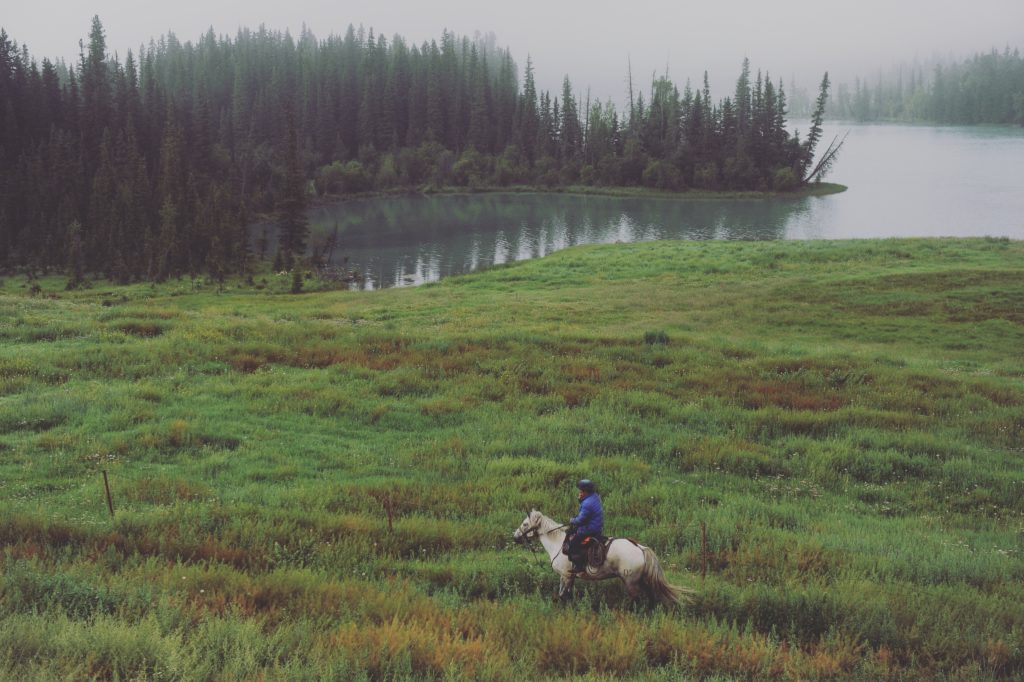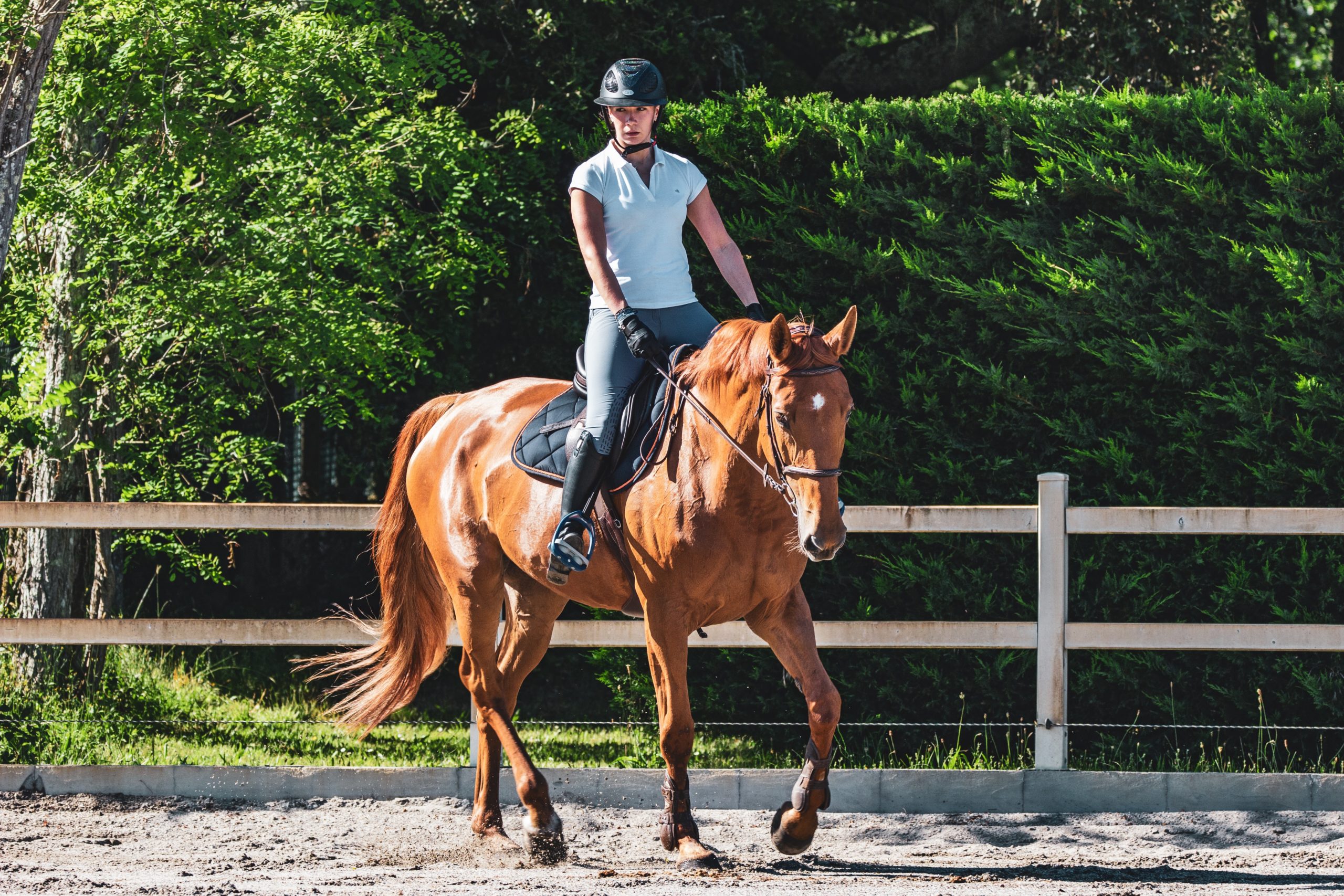1. Lose Your Reins
Jump without reins to help you develop an independent seat, so you do not have to pull on your reins to maintain your balance over the fences. This can help you stay more over the center of gravity of the horse and avoid overjumping. Your lower leg may tend to slip back. It happens because you are throwing your upper body over your horse when jumping. This causes your lower leg to slip back.
You only have to lose your reins on a safe and experienced horse. Do not drop your reins on a fresh, young, or difficult horse. You must do the jump on an easy grid because the horse stays straight on an easy grid. You need to consider the following before doing this exercise:
Use ground lines to build a grid. The horse will not run out if there are ground lines along the horse's side. You can make a chute for jumping down.
Know your reins. Do not leave your reins dangling because they could catch the leg of your horse. If this happens, you and your horse will tumble to the ground.
Trot it. Do not canter. Using 3 or 4 trotting placing poles can help you take off at the right spot.
Keep your grid straight. Ensure there are no dog legs or curves.
Stick to one-stride efforts, two-stride efforts, and bounces. Do not leave space for more than three strides with no reins. Why? Leaving space can string out your horse, making it difficult to complete the distance properly.
2. Grids, Bounces, More Grids, and More Bounces

One of the best cure-alls for both riders and horses is grids and bounces. Horses and riders can do regular bounce exercises and gymnastics to improve their form over fences. They can also use them to improve their style. The approach is not that important, so do not worry about it. You need to focus more on repeating these exercises. Repeating these exercises can help you fully focus on yourself.
Lowering the fences can help you focus fully on your own position. Use low fences and in quick succession after each other to work on your position. The jumps will come quickly, so it encourages you to soften through your body, especially your upper thigh, ankles, and knees. These are the areas of the body that usually grip, so you will not be secure in a jumping position. Concentrate on your position over the low, short grids to help you develop a good jumping position that is in balance and follows your horse.
It is very easy to increase your confidence over big fences using grids. If you have an ok position that keeps falling apart at 1.20m, you can do gymnastics and ride grids to set you up properly. It is easy to use gymnastics and riding grids to work on your position. This is because you will never have to worry about your approach over a large fence and the canter.
3. Spend More Time in Jumping position

You do not have to do a two-point position over fences. You can spend more time in a correct jumping position to make you more balanced, stronger, and develop your right muscle memory. It may sound simple because it is that simple. Get the right jump saddles to help with your position.
You can trot and canter around on a hack or the school in two-point. Your ankles and knees absorb the bouncing movement, so it is hard to trot. However, it is not only one of the easiest ways of learning to stay in balance with your horse. It also strengthens your calves.
Make sure you do not tip forward or backward. This is very important. If you cannot use your knee to pinch the saddle and your lower leg remains in contact with your horse, then taking your leg off over the fence or on the approach is not possible. You will have more stability both over fences and on the flat if your is leg is closed and draped against the side of your horse.
You need to repeat these exercises to help you focus on yourself.
4. Allow Your Horse to Help You Fold

It is hard to master the “fold” as you learn jumping, but it is very important to master it. Do not throw your body over the jump. Why? The horse may knock, so your leg may slip back, making it difficult for you to remain upright on landing. Going to the extreme and riding defensively can leave you behind and it makes the jump very awkward.
To learn to fold correctly, you must allow your horse to help you close the hip. Do not just focus on your upper body. On take off, your horse will lift his front legs and his back and neck will come up towards you. The jumping movement of your horse causes your hip to close up as the body of your horse comes towards your, especially if you stand as you flex your hips, ankles, and knees.
This is the reason riders usually fold more and go into exaggerated positions over a big fence than over a small fence. The jumping motion of the horse closes the hip angle to create more fold in the body.
